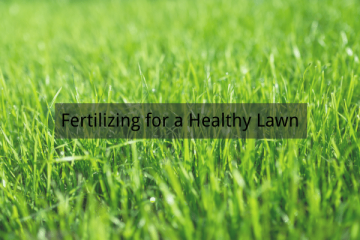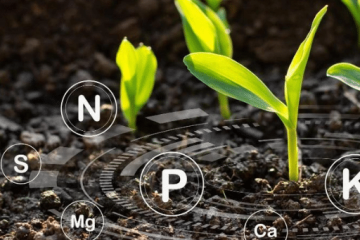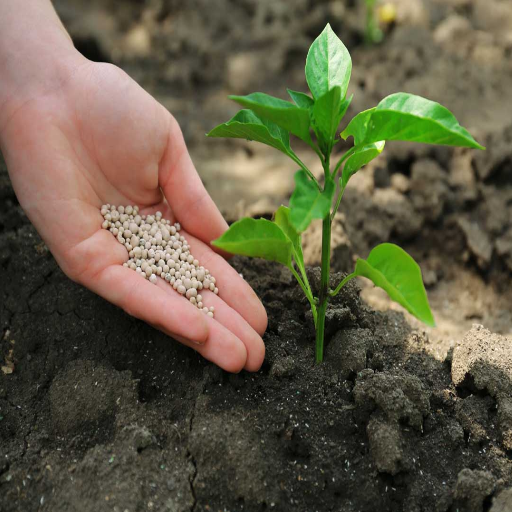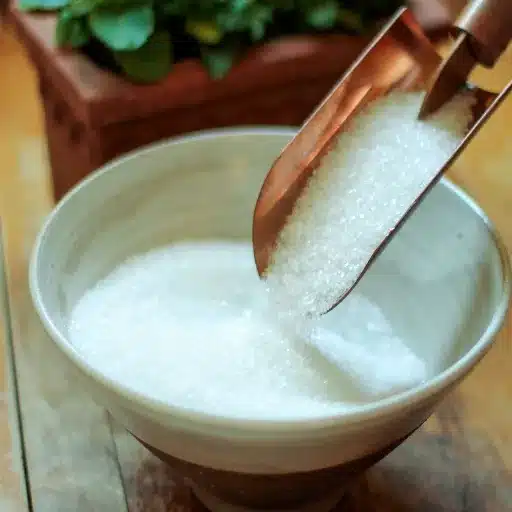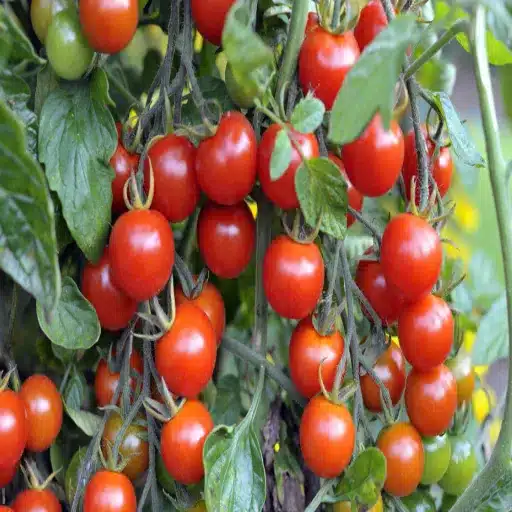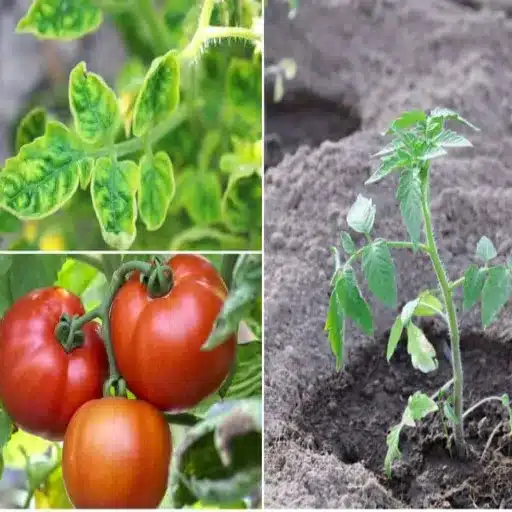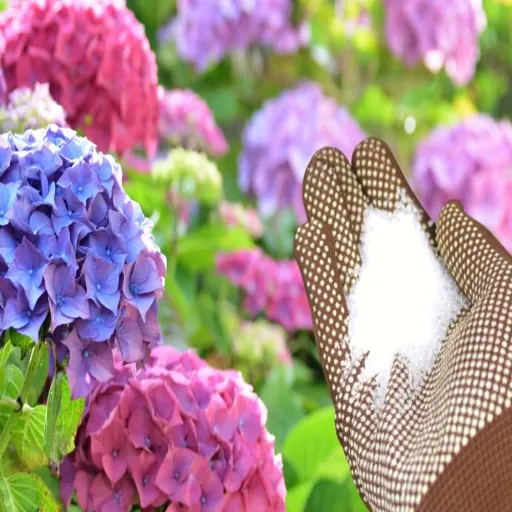When it comes to establishing a thriving, nutrient-rich lawn or garden, selecting the right fertilizer is a critical first step. The 6-20-20 fertilizer formula, known for its perfectly balanced combination of essential nutrients, is a go-to choice for homeowners and gardeners aiming to promote healthy growth right from the start. But what makes this specific fertilizer so effective, and how does it cater to the unique needs of your soil and plants? This article will explore the science behind 6-20-20 fertilizer, its distinct advantages, and how it serves as the ultimate starter fertilizer to set up your lawn and garden for long-term success. Whether you’re planting a lush green lawn or cultivating a productive vegetable garden, understanding how this formulation works will empower you to make informed decisions and achieve optimal results.
Understanding 6-20-20 Fertilizer
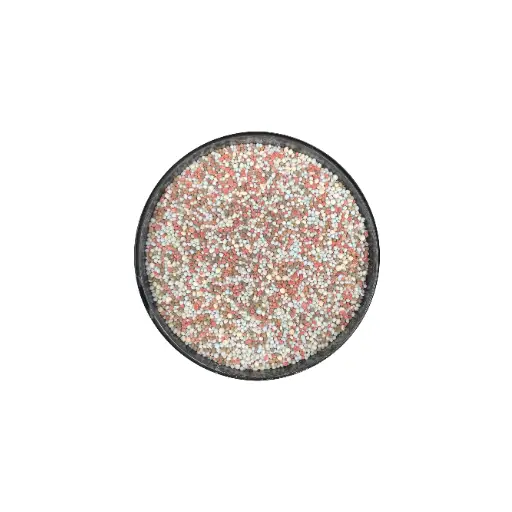
What is 6-20-20 Fertilizer?
Next, the 6-20-20 fertilizer has specific nutrient contents for plants, particularly as developing plants during their growth initiation. The fertilizer contains 6% nitrogen, 20% phosphorus, and 20% potassium. These three elements affect plant growth in different ways: nitrogen mostly promotes leaf and vegetative growth; phosphorus stimulates root development and flowering processes; plants need potassium to strengthen them against stresses imparted differently by their health.
Since these nutrients are balanced, 6-20-20 fertilizer can be a very effective starter fertilizer. It is therefore popular for use in planting activities at the onset of planting seasons, such as lawns and gardening, to foster strong seed germination and rooting. The primary element high in concentration is phosphorus, and it lends itself to having sufficient nourishment for seedling development during this early stage on a strong basis. Potassium also equips plants to withstand environmental perturbations during growth.
Because of its specific formulation, this fertilizer is better suited to soils that are already rich in nitrogen but want more phosphorus and potassium. It benefits crops such as corn, vegetables, and turfgrass that need an extra push of these nutrients during crucial phases. When applied in balanced amounts according to soil test results, this fertilizer magnifies the health of plants and directly increases efficiency in their cultivation by gardeners and landscapers.
Composition: Nitrogen, Phosphorus, and Potassium
Nitrogen (N) is a requisite macronutrient for healthy plant growth, which essentially goes into the formation of chlorophyll and proteins. This nutrient makes up an important part of photosynthesis and cell development, so that the plant grows efficiently and becomes richly infoliated with green foliage. Nitrogen is often demanded more particularly by crops derived from brisk vegetative growth stages. In such instances, excessive application of nitrogen can be an environmental hazard through leaching; the right dosage, however, enhances nutrient uptake, thereby incurring minimal loss.
Phosphorus (P) mainly supports roots, along with energy transfers and reproduction in plants. DNA and ATP synthesis are mostly affected by P, thus having a very definite bearing on plant energy metabolism. Further, it is most influential during flowering and fruiting to ensure the plants give profitable yields. Availability of phosphorus is affected by the pH of the soil and microbial activity. A suitable soil test should be performed to determine which supplementation will counteract the deficiency most efficiently.
Potassium (K) ensures general plant health through regulating water usage and drought resistance, and activating enzyme systems. These elements would strengthen cell walls from the inside and improve the texture and quality of fruits and seeds. Potassium is also closely related to resistance to pathogens and thus forms the cornerstone of the long-term sustainability of crops. The balance of potassium levels will guarantee the maximum efficiency in the availability of nutrients, which supports the good advancement of plants in the different growth stages.
Benefits of Using 6-20-20 Fertilizer
6-20-20 fertilizer formulation provides a balanced method of treating the essential plant nutrients. It aids in the establishment of a plant during early development, builds strong root systems, and assures worthy crop development. The 6-20-20 fertilizer has the following advantages:
- Enhanced Root Development: High phosphorus (20%) content is important to artisans as it assists in root generation in early plant development and allows for efficient uptake of nutrients.
- Enhanced Flowering and Fruiting: The equilibrium ratio (20%) of K is greatly involved in flowering and fruiting through the regulation of water movement in plants, photosynthesis, and carbohydrate synthesis.
- Nutrient Synergy and Utilization: Use of Nutrient Interference Nitrogen may interfere with P and K in protein synthesis and general vegetative growth in 6% amounts, whereas phosphorus and potassium guarantee precursor uptake in nutrient utilization during the plant growth cycle.
- Stress Tolerance: Potassium inherited through 6-20-20 will strengthen cell walls to improve drought tolerance and provide resilience against environmental stresses and pest attack, including temperature extremes.
- Yield Increment: Regularity in the application of 6-20-20 fertilizer will ensure uniform nutrient availability, which translates into uniform growth, better crop quality, and increased total yield-for instance, in cereals, vegetables, and fruits.
Modern agricultural practices consider this formulation for plants in stages where phosphorus and potassium are highly demanded.
Applications of 6-20-20 Fertilizer
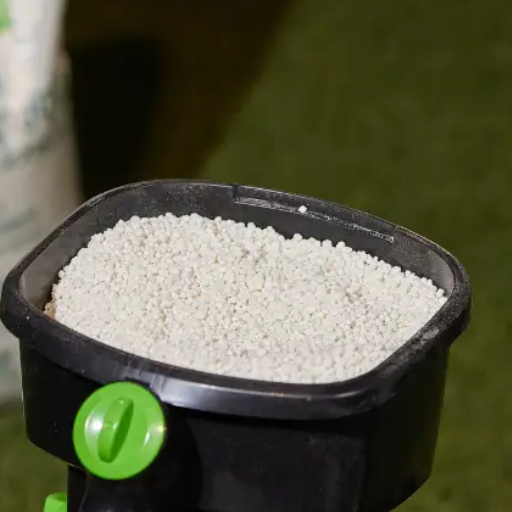
Best Uses for Fruits and Vegetables
During the early and mid-growth stages of fruits and vegetables, phosphorus and potassium are crucial in assuring height and weight, respectively. Establishing root systems and transferring energy in the plant are needs of phosphorus; therefore, this is crucial during the planting or transplanting stages. On the other hand, potassium retains cell turgor, regulates water, and assists in resisting the stresses that ultimately affect produce quality and size.
This fertilizer, 6-20-20, in the application to fruits like tomatoes, peppers, and berries, maximizes root penetration and flowering to ensure high production and continuous fruiting. Similarly, carrot, potato, and onion crops use this blend for carbohydrate storage in tubers and bulbs and increasing their structural strength for better market grade quality.
If applied uniformly, nutrient availability optimizes with the fertilizer application at the recommended rates (usually based on soil test results); meanwhile, nutrient lockout is avoided. For example, banding or broadcasting of the fertilizer incorporation during soil preparation ensures timely nutrient availability during the critical growth stages. This precision in application contributes effectively to output enhancement while maintaining sustainable agriculture practices.
Ornamental Plants and Flowering Gardens
To employ ornamental flora and to fashion flowering gardens demands a thorough comprehension of plant physiology, soil science, and climatic considerations. Above all, soil preparation is important since it enables the root to develop well and take in nutrients. Soil pH should be maintained in an ideal range of usually from 6.0 to 7.5, depending on the kind of plants, so that the nutrients will be readily available to the plants. The use of soil amendments, including organic compost or peat moss, is of great help in increasing porosity and water retention, and also in creating a favorable microbial environment.
Irrigation is yet another crucial aspect. Promoting water conservation from being wasted and avoiding over-irrigation are surely to the benefit of the plants; too much water can cause root rot and far worse fungal afflictions. Precision irrigation is attainable nowadays through the use of new smart irrigation technologies consisting of soil moisture sensors and an automatic drip irrigation system. Another very important aspect is nutrient management, where slow-release fertilizers or liquid feeds high in nitrogen, phosphorus, and potash will encourage healthy growth and flowering. Slow-release fertilizers provide nutrients progressively over very long periods through the various growth stages.
The last one is pest and disease management. Integrated pest management basically makes use of biological control agents and very targeted pesticide applications to reduce the environmental impact of the control measures while still providing sufficient control of any potential infestations. Conjoined with continued research and modern horticultural practices, these best practices definitely make ornamental gardens that flourish in aesthetics and ecologically responsible.
New Lawns and Grass Seed Establishment
Establishing new lawns and ensuring successful grass seed germination are achieved following a systematic approach rooted in agronomic principles. The first vital point to consider is the preparation of the site, which begins with soil testing for pH levels and the presence of nutrients. The best conditions for the soil are generally slightly acidic to neutral levels—in the range of 6.0-7.0—and have an adequate presence of nitrogen, phosphorus, and potassium for plant growth. Amendments such as lime or sulfur and balanced fertilizers can be applied, consequently, to address any deficiencies an excellent foundation is laid.
Much depends on seed selection, with the species chosen according to regional climate conditions, the amount of sun exposure the site has, and what the lawn is intended to be used for. In cool-season grasses, Kentucky bluegrass, fescue, or perennial ryegrass blends are typical, whereas for warm-season lawns, Bermuda grass or Zoysia is often chosen. Techniques for precision seed distribution, such as using broadcast spreaders or slit seeders, must be applied to provide an even seed cover and reduce seed wastage.
Fertilizer application, soil moisture, irrigation, and protection from traffic largely determine the establishment and germination of seeds. Seeds must be kept moist by watering lightly but frequently right from the day of sowing till the 7th to 21st day when they are most vulnerable. The young grass must be protected from heavy traffic to prevent soil compaction before it can tolerate some weight. A very light mulch is then beneficial to keep moisture in and control erosion. Materials are usually straw or seed blankets.
When planned well and paid due attention, new lawn systems can turn bare land into a lush green carpet within six to eight weeks, both for aesthetic purposes and environmental benefits, such as improvement in air quality and water infiltration.
How to Apply 6-20-20 Fertilizer
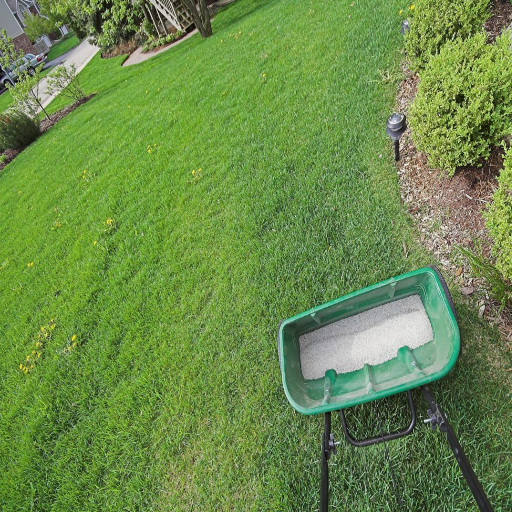
Recommended Methods for Application
The 6-20-20 fertilizer requires precision in application to get the most effectiveness out of it. This fertilizer blend, having 6% nitrogen, 20% phosphorus, and 20% potassium, can be considered best for crops or plants in early development, most particularly when the establishment of roots and energy storage is concerned.
- Assess Soil Composition: Have a comprehensive soil test done to determine the nutrient deficiencies and soil pH level before application. This will make sure that the 6-20-20 addresses any deficiencies that are present while not creating an environment where other nutrients are overly abundant.
- Application Rate: Apply the fertilizer at recommended rates for the crop concerned as stated in the soil test, usually in terms of pounds per acre or square foot for smaller tracts of land. Runoff into nearby water bodies can pose a threat to environmental concerns in case of over-application, whilst if under-application occurs, it will stand in the way of plant growth.
- Pre-Planting Incorporation: For row crops or garden work, fertilize into the soil about 2-4 inches deep ahead of planting. Keep nutrients close to the developing root zone for better absorption in the early phase of growth.
- Side-Dressing: For plants already growing, use side-dressing placement of the fertilizer 2-3 inches away from the base of the plants. This way, the fertilizer does not get into direct contact with the roots, minimizing danger from fertilizer burns.
- Granular Application: The granular fertilizer is intended for slow, controlled release of nutrients, whereas the liquid fertilizer acts fast to meet emergency demands of growing plants. Be sure to distribute it evenly while applying either one to avoid uneven growth.
- Timing and Frequency: The fertilizer should be applied at planting or early during the growth season when phosphorus is sought after most. Observe plant growth and supplement as needed later in the season based on visual clues or additional soil tests.
- Environmental Factors: To lessen runoff and environmental impact, apply fertilizer when the soil is not too wet or dry. Avoid the pre-application of fertilizer right before a heavy rain to ensure the nutrients will stay in the root zone and not leach away into water systems.
By following these precise guidelines, the 6-20-20 fertilizer can contribute immensely to improving earned yields by supporting good root development, adequate energy storage, and building resilience in plants.
Timing and Quantities for Different Soil Types
The application of 6-20-20 fertilizer must be carefully calibrated based on soil type to achieve better nutrient uptake and less inefficiency. In sandy soils, since the nutrient-holding capacity is less and leaching is higher, the recommended application is in small doses but at a higher frequency. These soils should receive split applications during the early growth stages so that phosphorus and potassium remain available when the plants demand them at their peak.
In loamy soils, usually a single application just before planting will suffice, as these soils hold nutrients more efficaciously, while offering good aeration and drainage. Application at a rate of 200-250 pounds of 6-20-20 fertilizer per acre is usual, depending upon the peculiar nutrient requirements of the crop and a laboratory analysis of the soil.
In soils with a high clay content, which retain water and nutrients to a great extent, fertilizers have to be applied several weeks before planting to allow for proper incorporation and distribution. However, caution needs to be exercised in order not to cause excessive compaction while applying fertilizers on heavy soils. Fertilization rates range from 180 to 220 pounds per acre and are adjusted depending on the levels of phosphorus and potassium already present.
By regularly testing soil composition, one can ensure that appropriate application rates are applied to diminish the possibility of nutrient imbalances. Also, if one can utilize precision farming tools such as variable rate technology (VRT), they can improve the timing of fertilizer application in certain zones of the field and the amount to be applied.
Using a Spreader for Granular Fertilizer
Using a spreader for granular fertilizer ensures that application is precise and evenly spread, the key to yield maximization with as minimal an environmental impact as possible. First, the spreader must be correctly calibrated, which means that the rate of application is set and the spreader’s distribution mechanism is adjusted so that the spreader applies the correct amount of fertilizer per unit area. The spreader will operate inconsistently and inefficiently if you fail to comply with the spreader’s manufacturer’s guidelines, working conditions, or fail to maintain the equipment regularly.
Once the spreader is calibrated, the next step is to fill the hopper with the fertilizer granules, keeping the material dry and free of clumps to avoid blockage. A predetermined path is then followed through the field, often aided by GPS-guided systems that provide utmost precision, for complete coverage of the area. Consistency in walking or driving speed is vital to preventing certain zones from receiving too much or too little fertilizer, with some plants and crops getting a little more nutrient dose than others.
On completion of the application, I assess the field for any areas that have been completely missed or allowed uneven nutrient distribution. Should any corrections come to mind, I promptly make amendments to avoid nutrient deficiency and excessive concentration that could hamper the plant’s growth. Lastly, the spreader is washed very well to prevent rusting and ensure that it remains in prime condition for future use. Such detailed steps will help me go all-out in achieving fertilizing efficiency with environmental conservation as an afterthought.
Comparing 6-20-20 Fertilizer with Other Fertilizers
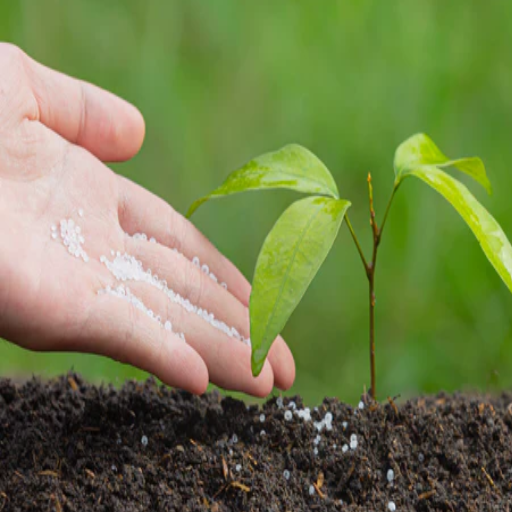
Advantages of 10-10-10 Fertilizer
- Higher Phosphorus Content: Among the fertilizer types, 6-20-20 ensures significantly higher phosphorus concentration than 10-10-10. With 20% phosphorus, it promotes root-building, flowering, and fruiting more prolifically and is excellent for crops and plants that favor vigorous development of these characteristics.
- Balanced Nutrient Ratio for Specific Crops: The 6-20-20 ratio is designed for crops that require less nitrogen and, conversely, want more phosphorus and potassium. As a case in point, root crops, such as carrots and potatoes, very well require this particular nutrient combination for proper growth during the season.
- Lower Chances of Nitrogen in Excess: This fertilizer has a nitrogen content of only 6%, so it would not cause nitrogen burn and excessive foliage formation of foliageformation in the plants. It is suitable for plants that do not demand high amounts of nitrogen because high nitrogen levels cause issues such as weak stems and poor fruit production.
- Greater Potassium for Disease Resistance: Potassium at 20% works toward the enhancement of resistance in plants to stress-related environmental conditions. Potassium reinforces the plant cell walls, controls the use of water in the cell, and helps the plant to face external conditions such as drought and frost.
- Optimized for Phosphate-Deficient Soil: Where the phosphorus level is low for a given soil, 6-20-20 fertilizer is one of the best choices for remedying the situation. A fertilizer with a balanced composition of nutrients prevents the situation of local deficiency, so it efficiently manages the phosphorus deficiency, thus not requiring the repeated application of more fertilizer.
This specific approach makes 6-20-20 a much better option in certain agricultural contexts than the all-purpose 10-10-10.
Situations Where 6-20-20 May Not Be Ideal
Although 6-20-20 fertilizers best address phosphorus deficiency symptoms, 6-20-20 fertilizers may not bring about the finest results in particular situations. Such an aspect comes into play in already phosphorus-rich soils. High levels of phosphorus may create nutrient imbalance, while phosphorus may hinder or interact negatively with the bioavailability of other essential metals, such as zinc and iron, in crop development. Adding more phosphorus to fertilizers in soils that are high in phosphorus levels would only exacerbate these problems. Thus, it is important to regularly test soils before application, so the fertilizer indeed fits the nutrient profile of the soil.
Moreover, it is uncomfortable to apply 6-20-20 in agriculture over sandy soils where the soils are quite permeable. This type of soil is deficient in nutrient retention properties and quite intolerant of nitrogen retention, the most important ingredient in this mixture of fertilizer. Nitrogen gets easily leached in concern to these soils due to leaching from excess rainfall or irrigation, resulting in an environmental issue in the form of nitrate contamination of groundwater. Fertilizers consisting of controlled-release nitrogen or amended soils that improve nutrient retention could therefore be of better prospect in such a case.
Lastly, 6-20-20 fertilizers may not be adequate for certain crops and growing conditions requiring a contrasting nutrient ratio. For example, leafy vegetables or those in the vegetative stage usually demand a lot of nitrogen to keep up with a lot of green growth. On the other hand, conditions with high rainfall might put a strain on potassium availability, which the moderate potassium content in this fertilizer may not be able to counter adequately. When one identifies a crop’s nutrient requirements as well as environmental factors, fertilizer application can be fine-tuned, reducing wastage and boosting output in agricultural development.
Understanding Fertilizer Ratios and Their Impact
Fertilizer ratios are the key aspect of nutrient management in agriculture as they provide the correct nutritional balance for crops. These ratios are typically indicated as a series of three numbers, each representing the percentage by weight of nitrogen (N), phosphorus (P), and potassium (K) in the fertilizer blend. Each element performs a specific and crucial role in plant growth and development, and knowing these ratios is important to optimize yield creation and maintain soil health. The following are five common fertilizer ratios with their specific uses and advantages:
- 10-10-10 (Balanced Fertilizer)
- Composition: 10% nitrogen, 10% phosphorus, 10% potassium.
- Application: General-purpose fertilization aids overall growth in lawns, flowers, and veggies.
- Effect: Supports the even development of root, leaf, and flower.
- 20-10-10 (Nitrogen-Predominate Fertilizer)
- Composition: 20% nitrogen, 10% phosphorus, 10% potassium.
- Application: Nitrogen heavy for crops such as leafy vegetables and tall grasses.
- Effect: Promotes green growth and thickening of the leaves with moderate root and flower development.
- 5-10-10 (Phosphorus and Potassium Heavy Fertilizer)
- Composition: 5% nitrogen, 10% phosphorus, 10% potassium.
- Application: For fruiting and flowering plants, such as tomatoes and peppers, and root crops, such as carrots.
- Effect: Encourages root development and yields abundant flowers.
- 16-4-8 (Lawn Fertilizer)
- Composition: 16% nitrogen, 4% phosphorus, 8% potassium.
- Application: Primary lawn care fertilizer designed to promote the lush and beautiful growth of grass.
- Effect: Maximizes leaf growth and builds resistance for grass against pests and diseases.
- 0-20-20 (Phosphorus and Potassium Fertilizer)
- Composition: 0% nitrogen, 20% phosphorus, 20% potassium.
- Application: Best suited to mature plants concentrating on root and reproductive development.
- Effect: Enhances the output of fruits and flowers while discouraging excessive foliage growth.
Farmers then utilize the fertilizer ratio best suited for the crops they are growing, fertilizer applications based on the soil analysis, and environmental conditions. These ratios not only maximize crop performance but also assist in sustainable farming by stopping over-fertilization and nutrient runoff.
Best Practices for Handling and Storing Fertilizer
Storage Guidelines for Longevity
The correct storage of fertilizers is important to maintain their efficacy and also for environmental safety. Fertilizers should be stored in a cool, dry place away from sunlight, since heat and moisture tend to decrease chemical stability and potency. For best results, always store the product in its original bag or container, sealed tightly, since exposure to air or pests may contaminate or affect it.
Keep fertilizer in an area away from flammable materials, water sources, and flooding. This reduces the chances of chemical reactions and nutrient leaching into nearby ecosystems. Furthermore, ensure the gaseous area storage is ventilated adequately to prevent possible toxic gas accumulation and maintain structural integrity via containment with non-corrosive surfaces or bins.
Proper classification of fertilizers according to their chemical composition, e.g., nitrogen-based-, phosphorus-based-, or potassium-based products, will make it easier to manage inventory and avoid mixing incompatible compounds inadvertently. These practices not only improve the duration of shelf life of fertilizers but also follow regulatory guidelines and decrease the environmental hazards involved.
Safety Measures During Application
- Wearing Appropriate Personal Protective Equipment: Always put on the required personal protective equipment when handling fertilizers. These would include protective gloves of good quality, safety goggles, long-sleeved clothes, or shoes with closed toes to prevent direct contact with fertilizers. OSHA standards state that an appropriate kind of PPE reduces the possibility of suffering skin irritation by 60% and also chemical burns.
- Following Application Rates: Always follow application rates recommended by the manufacturers of the fertilizers. Overapplication can lead to nutrient runoff; therefore, it is not good for the water system nearby. For example, excess nitrogen application can increase nitrate contamination by as much as 30% in an adjacent water body.
- Calibration of Equipment: Make sure to keep your spreaders, sprayers, or other application equipment in good working order. Regular calibration ensures even distribution and prevents the creation of hotspots. It helps save your product and increases the efficiency of absorption of fertilizers by plants by about 15%.
- Keep Away From Fertilizer Application Before Heavy Rain: Application of fertilizers should never be done right before heavy rain, since this increases the risk of runoff and leaching. Such instances account for 40% of nutrient loss by runoff.
- Establishment of Buffer Zones: Buffer zones must be maintained around water bodies to curb fertilizer runoff into streams, lakes, or rivers. A minimum of a 10-foot buffer strip can reduce nitrogen and phosphorus runoff by at least 25%, thus protecting surrounding ecosystems from nutrient pollution.
Following the discussed safety measures will greatly assist in reducing risks presented to human health, the environment, and the efficacy of crop yield.
Environmental Considerations
To promote nutrient management methods in environmental protection against water quality degradation and greenhouse gas emissions, one must efficiently practice these methods. Runoff from fertilizers, when applied in excess, leads to eutrophication of water bodies, which causes algal blooms and hypoxic conditions that threaten marine and freshwater life. According to studies, agricultural runoff accounts for almost 50% of nitrogen, phosphorus pollution entering global water systems, emphasizing the need for precision agricultural systems.
At the same time, imbalanced nutrient management is also responsible for N₂O emissions from a greenhouse gas standpoint and has a global warming potential of about 300 times greater than that of carbon dioxide over 100 years. Splitting fertilizer application, using enhanced efficiency fertilizers, and cover cropping practices are said to reduce 30% of N₂O emissions, which is a fair change in the agricultural greenhouse gas footprint.
By engaging agricultural activities in line with proven environmental strategies, nutrient use efficiency can be maximized, ecosystems can be protected, and the more considerable challenge of climate change confronted. Advances in soil testing, remote sensing, and decision-making based on accurate data will keep advancing the cause of reduced environmental disturbance with full production intensity.
References
Frequently Asked Questions (FAQ)
Q: What is 6-20-20 fertilizer used for?
A: 6-20-20 fertilizer is primarily used as a starter fertilizer for new lawns, providing essential nutrients like nitrogen, phosphorus, and potassium. This formulation helps enhance root growth and development, which is crucial for newly seeded lawns and grass seed, and sod.
Q: How does 6-20-20 fertilizer benefit soil health?
A: The high phosphorus content in 6-20-20 fertilizer supports root and flower growth, making it effective for promoting a healthy lawn. Phosphorus is essential for early growth and enhances overall plant health by ensuring a robust root system.
Q: When is the best time to apply 6-20-20 fertilizer?
A: The best times for applying 6-20-20 fertilizer are immediately after planting new grass or when seeding. This timing allows the nutrients to be readily available for uptake by the young plants, which is essential for their growth and health.
Q: Can 6-20-20 fertilizer be used for established lawns?
A: While 6-20-20 fertilizer is ideal for new lawns, it can also be used for established lawns that require a boost in phosphorus levels. However, soil test recommendations should be followed to avoid over-fertilization and nutrient runoff.
Q: How should 6-20-20 fertilizer be applied?
A: 6-20-20 fertilizer can be applied using a spreader for even distribution. Methods of application may vary, but granular forms allow for slow-release nutrient delivery, which is beneficial for the growth of leaves and overall plant health.
Q: Is 6-20-20 fertilizer suitable for all types of soil?
A: 6-20-20 fertilizer is suitable for various soil types, but a soil test is recommended to determine nutrient deficiencies. The formulation is particularly beneficial in soils low in phosphorus, helping to enhance soil health and support vigorous growth.
Q: What are the main nutrients found in 6-20-20 fertilizer?
A: The main nutrients in 6-20-20 fertilizer are nitrogen (N), phosphorus (P), and potassium (K). This specific NPK ratio (6-20-20) emphasizes phosphorus, which is essential for promoting root development and ensuring a thriving lawn.
Q: Can I mix 6-20-20 fertilizer with other fertilizers?
A: Yes, 6-20-20 fertilizer can be mixed with other compatible fertilizers, such as a balanced 10-10-10 fertilizer, depending on the needs of the plants and specific soil conditions. However, care should be taken to avoid nutrient imbalances.
Q: What are the signs of nutrient deficiency in lawns?
A: Signs of nutrient deficiency in lawns include poor growth, yellowing of leaves, and weak root systems. Using 6-20-20 fertilizer can help address phosphorus deficiencies, leading to improved disease resistance and a healthier, more beautiful landscape.

